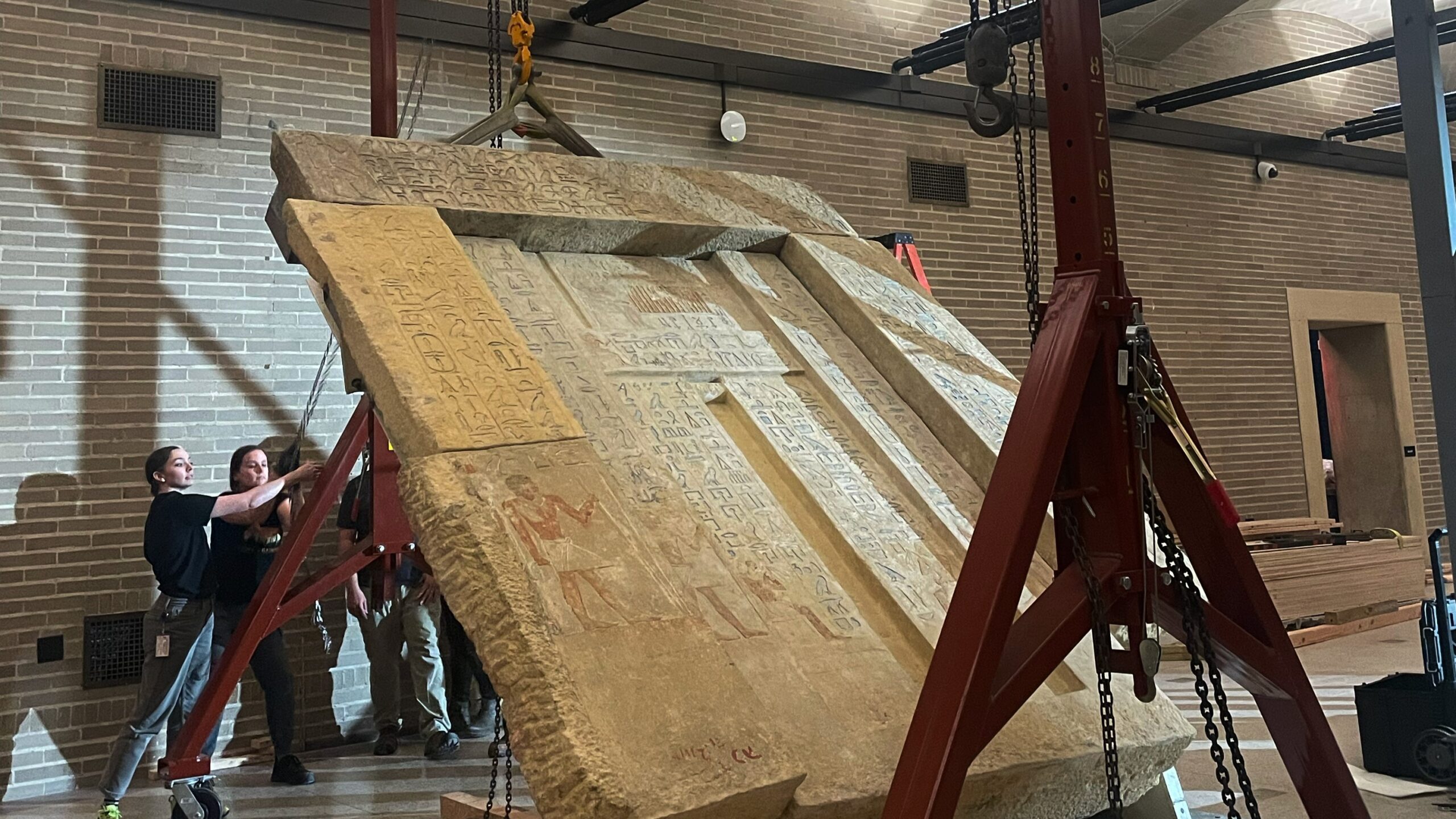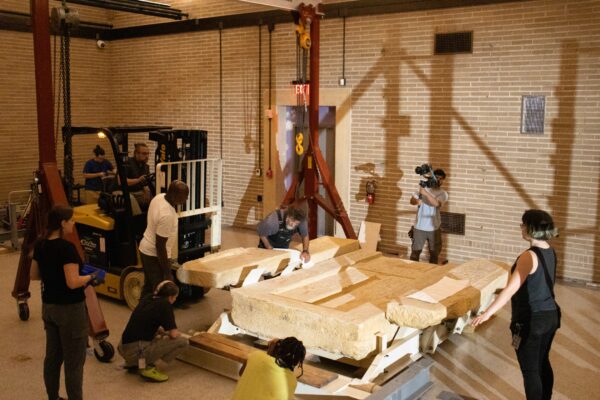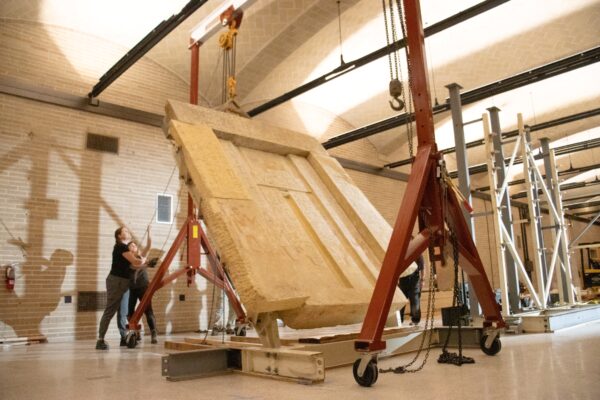At 4300 years-old and weighing five tonnes, a stone doorway for the dead has become a monumental sign of a US museum’s plans to recreate ancient Egyptian life.
The five-tonne ‘false door’ is part of plans for a 1300-square metre recreation of life in ancient Egypt and Nubia at the Penn Museum in Philadelphia.
A team of conservationists and engineers were required to install the ‘door from the Tomb Chapel of Kaipure found at Saqqara, itself a necropolis (city of the dead) for the ancient political capital city of Memphis.
WATCH HERE: watch a timelapse video of the door’s raising at the museum.
The 43 year-old ‘false door’ was excavated more than 100 years ago but has not been seen in public since 1996, the museum says.
The tomb chapel (offering chamber) will form the centrepiece of Egypt Galleries: Life and Afterlife exhibition, due to open to the public in late 2026.
“There are not many museums in the US with such a well-preserved ancient building like the Tomb Chapel of Kaipure, a highlight of the museum’s collection,” says museum Egyptologist and lead curator Dr Jennifer Houser Wegner.
“One of the curatorial goals of Egypt Galleries is to humanise the ancient Egyptians, helping visitors to see them not as distant or exotic figures, but as real people.
“The individuals who made these artifacts, carved the stone, and painted the statues were people, just like us,” Dr Wegner says.
“The people these objects are commemorating were once living, breathing people who had jobs, fell in love, ate and drank, had families, worried about troubles and celebrated joys, just like we do.”
4300 YEAR-OLD DOOR
The museum says a tomb chapel is where priests perform funerary rites and make offerings to sustain the dead in the afterlife; the ‘false door’ is a symbolic doorway for the dead’s spirit to access those offerings.
After almost 30 years of conservation work, the tomb chapel and its 4300 year-old ‘false door’ now shows hieroglyphic inscriptions and scenes of daily life, offerings and rituals.
It also depicts the person buried in the tomb: Kaipure, a high-ranking treasury official of Egypt’s Old Kingdom era (ca. 2350 BCE).
Visitors to the gallery will be able to move through which will be the structure of ancient Egyptian tomb chapel, the museum says.
“To preserve the experience of going into a large space like the funerary chapel, the conservation process is a complex and collaborative effort,” says Julia Commander, a senior project conservator at the museum.
“Every level of detail matters − from the smallest trace of original pigment to the structure’s overall layout.”
“Everyone at the museum is tremendously excited and grateful to have completed the construction of the Egypt Galleries,” says Dr. Christopher Woods, Williams Director at the Penn Museum and Avalon Professor for the Humanities in the School of Arts and Sciences.
“The newly conserved and assembled Tomb Chapel of Kaipure not only marks an important milestone in this once-in-a-lifetime project, it also offers a glimpse of more monumental things to come.”
PART OF MONUMENTAL PLANS
The larger renovations will be the largest in its 138-year-history, the museum says.
The Ancient Egypt and Nubia Galleries will be divided into two phases:
- Egypt Galleries: Life and Afterlife.Chronologically organised galleries that will introduce to visitors the daily life of ancient professions, home life, craft production, ancient writing, papyri manuscripts and how burial practices changed with artifacts on show.
- Egypt and Nubia Galleries: Royalty and Religion (opening late 2028). Showcasing the 3000-year-old palace of Pharaoh Merenptah with 9-metre-tall columns from the palace to be on show since their excavation more than 100 years ago.
OTHER MUSEUM NEWS: Tomb from a lost dynasty comes to light








